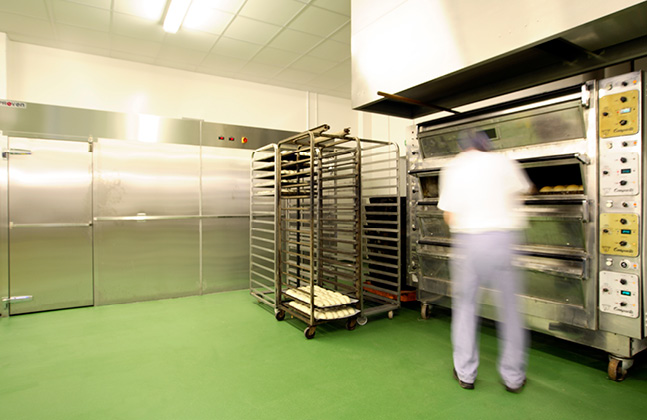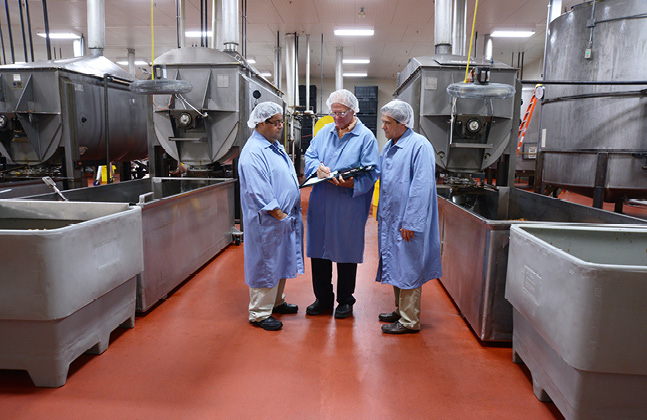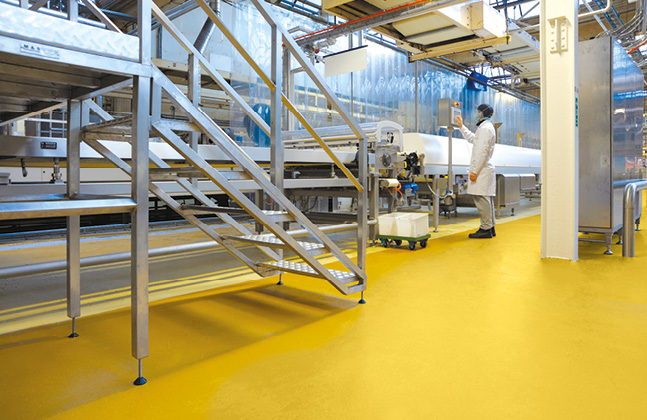Choosing the correct material for a food processing facility floor can be a difficult process, but this handy list provides an insight into the key elements which should be at the forefront of the decision making process.
When asked about food safety most people think of cleaning procedures, food handling, correct processing, temperatures and storage – the floor is often an afterthought. Yet if designed incorrectly, a floor within a food processing environment can become a costly oversight.
Some of the key questions you should consider when choosing a food safe floor are:
- Is the flooring material non-tainting?
- Does the flooring solution provide a seamless finish?
- Can the floor stand up to harsh chemicals?
- Have you considered correct gradients and drainage?
- Does the flooring product feature antimicrobial properties?
Tainting of food products can occur during the installation of flooring materials which feature strong smelling volatile chemicals. If the facility is not correctly equipped to deal with the extraction of these chemicals the odours can penetrate foodstuffs, rendering the products unfit for consumption. The product you ultimately choose should be listed as non-tainting and low odour or correct extraction and ventilation methods should be used to mitigate the hazard.
Floors within food production environments should be seamless as this aids cleanability and reduces the risk of food particles falling into cracks and grooves. If food particles are trapped in hard to reach places, they can begin to harbour mould and other microorganisms. This can lead to contaminated products and potentially the outbreak of a foodborne illness. Installing a seamless floor reduces the risk of trapped particles and used in conjunction with coving can create a hygienic, easy to clean platform under foot.
Harsh chemicals are often spilled on floors in food production facilities, either during the manufacturing process or when cleaning oils, grease, fats and other materials off the floor surface. A flooring solution which features strong chemical resistance is key to a food safe floor. Make sure you check whether your proposed flooring system is suitable to withstand the range of chemicals, acids or alkaline detergents you plan to use.
- Have you considered correct gradients and drainage?
- Does the flooring product feature antimicrobial properties?
A common issue within food production areas is the ponding or pooling of water in areas on the floor. This occurs when correct gradients in the floor height have not been specified; falls to floor are specified to make sure fluids run towards drains to minimise the potential for bacterial growth and slip hazards.
One of the most important aspects of a food and beverage floor solution is its antimicrobial properties. Does the floor you are choosing feature an antimicrobial additive? Antimicrobial additives work to destroy common bacteria on the surface of the floor, reducing the risk of product contamination. Ensure the flooring system you specify features an antimicrobial agent which will keep your facility hygienic and your consumers protected.







